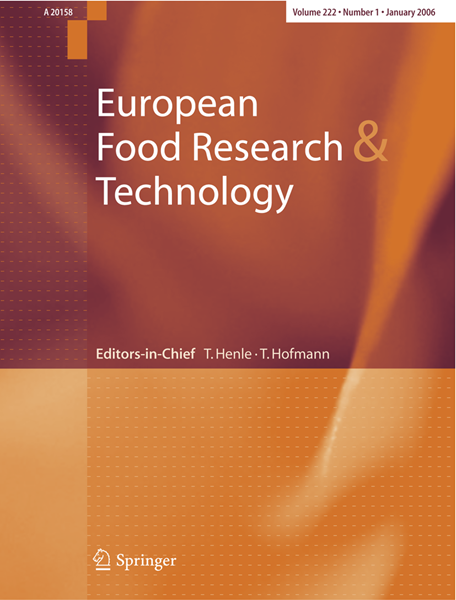Phenolic constituents, in silico and in vitro evaluation of anti-HMG-CoA reductase capacity of different Prunus persica extracts
Abstract
Peach processing produces considerable amounts of by-products including peels and kernels that are a rich source of health promoting compounds. Despite their rich content of bioactive compounds, there is a lack of information about the chemical and biological properties of peach extracts, which depend on different factors including the extraction method. Therefore, this study assessed the phenolic profile of peach extracts obtained from seeds and flesh with skin parts by two methods (maceration and ultrasound-assisted extraction (UAE) as well as their hypocholesterolemia potential. The results show that total polyphenol content (TPC) was affected by both the extraction method and tissue type. The peach seeds were found to have the highest TPC (11.98–18.29 g/100 g) compared with the flesh and skin extracts (TPC 6.62–9.29 g/100 g). Peach extracts obtained by UAE exhibited higher in vitro anti-HMG-CoA reductase (HMGCR) activity (35.52–37.14%) than those extracted with maceration (30.70–33.53%), which could be linked to the difference in their TPC. All the tested extracts have the same phenolic profile and Nano-LC-ESI-MS/MS analysis yielded a comprehensive identification of 21 compounds. In silico docking study of these compounds revealed the ability of medicarpin derivative and hydroxy-ethyl gallate to establish different interactions with HMGCR active site, acting so as competitive inhibitors against the enzyme. Peach by-products have an excellent potential for the development of new functional foods or drugs.

 求助内容:
求助内容: 应助结果提醒方式:
应助结果提醒方式:


